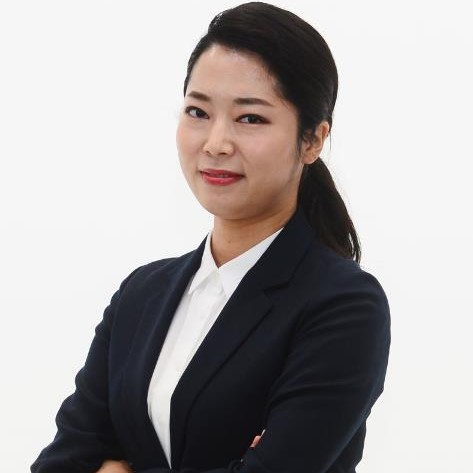[KH explains] Will CATL’s Korean push reshape battery alliance with Hyundai, Kia?
Chinese battery giant likely to seek more supply deals for lower-priced EVs
By Byun Hye-jinPublished : Oct. 9, 2024 - 15:11

China’s CATL, the world’s largest battery maker for electric vehicles, is reportedly seeking a bigger footing in Korea, the home turf of its archrivals LG Energy Solution, Samsung SDI and SK On, and a crucial client, Hyundai Motor Group.
According to industry sources, the Chinese company is reviewing setting up its Korean unit by upgrading the current office in Seoul that has been operational since 2011. The specific nature of the new operations has not yet been disclosed -- whether it would be a sales or production corporation -- but sources say the industry leader is likely to expand its presence in Korea, where its batteries have recently gained attention amid concerns over EV fires.
“There are only two or three staff at CATL’s Seoul branch. If it sets up a local, more people are expected to join, which means more business engagement especially with Hyundai and Kia,” said Park Cheol-wan, a car engineering professor at Seojeong University.
Back in the limelight
CATL’s No. 1 position has also been revisited after a massive fire in August involving a Mercedes-Benz EV that was found to have used cheaper batteries from a lesser known Chinese company, Farasis.
At this week’s parliamentary audit, Mercedes-Benz Korea CEO Mathias Vaitl faced a barrage of questions over the fire and apologized for misleading consumers on the battery origin. The carmaker uses both CATL and Farasis batteries for its luxury EVs sold here but its dealers are suspected to have been trained to promote CATL batteries only.
“Although vehicles equipped with CATL batteries have relatively low sales volumes here, there is significant potential for growth, as mid- to low-priced EVs are performing well in the market,” stated Kim Pil-su, an automotive engineering professor at Daelim University. “Amid fire fears, many consumers may feel relieved that their cars use batteries from the world’s top player.”
In a move to soothe EV phobia, carmakers have been under pressure to disclose their battery suppliers and Hyundai and Kia and some luxury car brands were found to use batteries from Korea or CATL.
Currently, Hyundai and Kia cars use mostly Korea-made batteries. Only three models --Hyundai Kona Electric, Kia Ray and Niro EVs -- use CATL batteries.
With the revamped Korean unit, sources say CATL, whose products have strong price competitiveness, will likely try to ramp up sales to Hyundai. CATL’s lithium ferro-phosphate (LFP) batteries are about 30 percent cheaper than the nickel, cobalt and manganese (NCM) batteries made by Korean rivals.
Kim added that the local unit could increase brand awareness among other carmakers if it was upgraded to a point where it had more independence from the top-down decision-making of its Chinese headquarters. Renault Korea Motors and General Motors Korea use LG Energy Solution batteries, while KG Mobility has a tight partnership with BYD, another major Chinese battery maker.
In the meantime, Hyundai has hinted at developing cheaper LFP batteries on its own, which means less room for CATL’s marketing push. But industry officials admit that it could take some years for the ambitious vision to be realized.
No incentive for Korean production
CATL’s Korean push has also prompted speculations that the company could establish a production base in Korea, possibly to benefit from Washington’s Inflation Reduction Act, which effectively keeps Chinese-made batteries out of EVs sold in the US. But industry watchers here see little incentive for CATL to produce batteries in Korea.
“If CATL hopes to boost its US business, it is better to set up a production plant there, not in Korea,” said Park. “Hyundai and Kia cars using CATL batteries also cannot benefit from the IRA.”
Kim said there was a possibility that CATL would partner with materials firms such as Posco Future M but he added these deals could be made without setting up a production plant here.
An industry official was also skeptical of the regulatory approval that would be needed.
“Given the close ties with the US, the Korean government will be reluctant to give the green light to the plant operated by a Chinese firm that also compete head-on with Korean battery makers,” the official from a local battery company said on condition of anonymity.
The creeping presence of the Chinese battery giant is also a major wake-up call for the Korean battery trio.
According to the Korea Transportation Safety Authority, CATL supplies batteries to 23 EVs here, compared to 35 of LG Energy Solution, 26 of SK on and 20 of Samsung SDI.
Another official from a local battery maker downplayed a significant impact from CATL’s business expansion here but admitted that Korean companies are also closely watching the situation.
“At a time when we are striving to develop more affordable LFP or post-LFP batteries on our own, we feel some pressure from the No. 1 player’s Korean push.”
In the first half of this year, CATL took up 26.9 percent of the global market outside China, narrowly outpacing Korea’s LG Energy Solution with 25.6 percent.





![[Herald Interview] How Gopizza got big in India](http://res.heraldm.com/phpwas/restmb_idxmake.php?idx=644&simg=/content/image/2024/11/20/20241120050057_0.jpg&u=20241120164556)

![[KH Explains] Dissecting Hyundai Motor's lobbying in US](http://res.heraldm.com/phpwas/restmb_idxmake.php?idx=644&simg=/content/image/2024/11/20/20241120050034_0.jpg&u=)

![[Kim Seong-kon] Farewell to the vanishing John Wayne era](http://res.heraldm.com/phpwas/restmb_idxmake.php?idx=644&simg=/content/image/2024/11/19/20241119050096_0.jpg&u=)








![[Today’s K-pop] Blackpink’s Jennie, Lisa invited to Coachella as solo acts](http://res.heraldm.com/phpwas/restmb_idxmake.php?idx=642&simg=/content/image/2024/11/21/20241121050099_0.jpg&u=20241121172748)